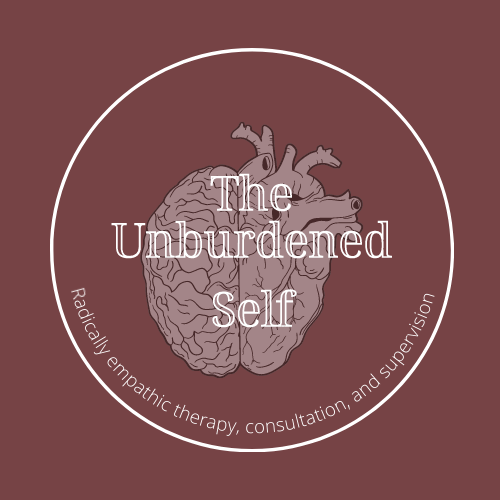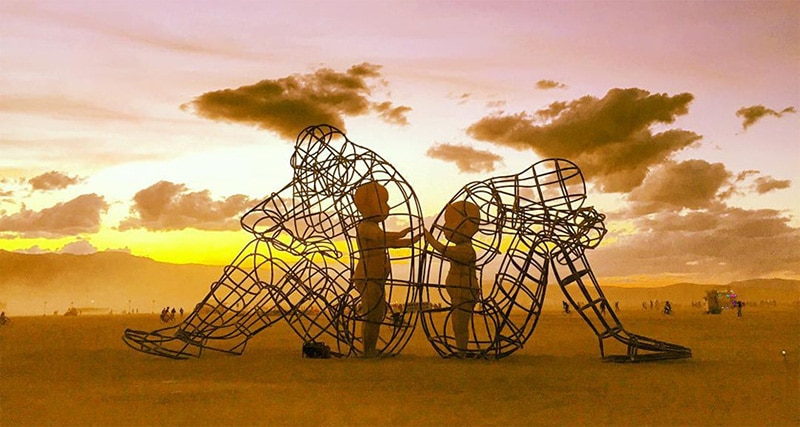Fr

So you’re considering therapy? That’s brave work. Seriously. Therapy can feel scary and challenging. So what can you expect? What happens? What weird things is this therapist gonna say to you?
Also note here, I can only speak for the layout of the experience folks have in my office, I cannot speak for every therapist.
My office uses the Simple Practice online software for electronic health management. So when you are scheduled for an appointment, you’ll get an email or text link to some paperwork to complete. Please try to do so before your first appointment, it will save us a bunch of time in your first session. Telehealth will look different than coming to the physical office. So first, if you’re coming to the office (see the location & office address page), you will find a green door and a lobby. Inside the lobby, chairs are socially distanced and you will need to wear your mask. There is a bathroom straight through the door of the lobby, clearly marked. It is a one-stall, all gender restroom. You will wait in the lobby until I’m ready for your appointment. Help yourself to water if you’re comfortable. If not, no worries.
Once you’re in my office, I will introduce myself and we will review any insurance, payment, paperwork information that is unclear to me or that you have questions about. If all of that is good to go, then we will just start talking about what’s bringing you in. One of my favorite questions is “what’s bringing you in to therapy now?” This isn’t a judgment, more so that I can understand what about right now is feeling prominent.
We will spend the first hour of our time together reviewing some life history, some current symptoms, and what’s going on that brought you in. This can feel exhausting for folks the first time they come in. Don’t worry–it doesn’t mean you are doing it wrong. It’s just tiring to tell a total stranger your story. Also know, you are never required to tell me everything on the first day or at all. I don’t expect that the folks I hold space for tell me their deepest secrets, especially the first time they tell me. If you want to, that’s fine by me. But I won’t ever demand things that you aren’t ready to share. That’s not trauma informed therapy.
My goal from that first session is to understand how you see the world, as much as I can, what it has been like to move through the world as you do. I cannot ever do this 100% accurately because I have moved through the world as myself. I want to hear what you have to say. My job is to hold space for you to let your brightest, fullest, most compassionate self be present (trust and know if you just rolled your eyes, that I once asked a therapist that I saw for her full list of credentials to ensure she wasn’t going to try to get me to do deep emotion work—so you are totally allowed to have a skeptical part).
All your parts are welcome here.
~Christina

I believe that all of us are using the tools that we have fashioned over the course of our lives to survive. Even if those tools are no longer really working or sometimes are creating new problems, I believe our systems are oriented toward connection and safety. Even when we haven’t gotten to experience it from very early birth, even if we didn’t experience it ever at all, even if we have experienced it and aren’t right now. I believe we are oriented toward being connected (because we are humans–I’ve yet to meet a robot wizard disguised as a human-maybe someday). I believe that we are a balance of nature and nurture and that we carry around deeply rooted hurts inside of us for the entirety of our lives and often act from those hurts until we go back and visit them.
This statue is one of my favorite images for what I think about the purpose of therapy. You can see these two adult figures built of wire, turned toward each other, downtrodden, even dismayed (my own reading) but then you see these two little humans inside of them reaching for one another. They just need help to figure out how to reach for each other in safe ways, in ways that feel safe for the person we are reaching for and feel safe for us.
I believe every person can benefit from therapy, whether or not you can identify one singular incident that has set off a series of bad events. For some folks, there are a plethora of bad events and for others, what feel like small things like your family never really talks about feelings and somehow you feel like the only one who isn’t SUPER happy all the time. Or perhaps you’re the only person who is openly queer or trans in your family. Or perhaps you are the only person open about having a mental health diagnosis. Or perhaps you are a Black person living in a system that is rooted in white supremacy and need some place to just honor that rage that you feel. Perhaps you work three jobs and still cannot afford things you need and feel like a failure (because the system would have you feel that way). Perhaps you’re a therapist and feel like you are never going to be good enough. My point is, therapy is for everyone.

Welcome to Internal Family Systems! There are books written on the subject and I’m a new practitioner, finishing my Level 1 training (there are 3 levels and certification to attain), in 2023, I am a relatively new provider. I would encourage you to consider listening here for an explanation of what IFS is and what it can do. It’s been quite life-changing for me.
EMDR stands for Eye Movement Desensitization & Reprocessing and is most commonly used to treat PTSD, however, I use a combination of EMDR, parts work, relational based therapy, liberation focused therapy, and client-centered therapy for most issues.
EMDR uses bilateral stimulation (via eyes, ears, or tapping) to get both sides of the brain communicating in order to separate painful emotions from the past experiences. This allows you to learn from this experience and use these valuable lessons to guide you in a positive direction in the future. Recent advancements in neurobiology have supported the effectiveness of linking network pathways’ in order to consolidate adaptive (healthy) psychological learning. I really love these videos by Dr. Tori Olds, Ph.D. to pretty simply explain memory reconsolidating and the science background of what I love about EMDR. She doesn’t describe EMDR specifically as there are a number of modalities that do this work but she does talk through the brain’s capacity for unlearning earlier wired implicit messaging, or in EMDR language, negative core beliefs.
This first video discusses memory reconsolidating which is essentially the process that EMDR uses of making the past conscious again in a felt sense (feelings and emotions, especially in the body rather than thoughts about the thing).
The second video is a deeper dive (about ~30 minutes) into the ways that brains change. I really appreciate what she says about the difference between CBT (cognitive behavior therapy) and memory change therapies. CBT does work to help challenge, changes, and address thoughts but the truth is that you have to do that over and over again all the time, for a long time. But with memory reconsolidating, feeling through to the root of that hurt, belief, or lie about yourself can free you up more quickly and though you may still need some reminders or CBT work, it will be much easier to believe the positive beliefs. In my practice, I have successfully used EMDR with multiple issues including single and complex traumas.
And finally, for us visual learners, here is a pretty quick and easy video about EMDR itself.